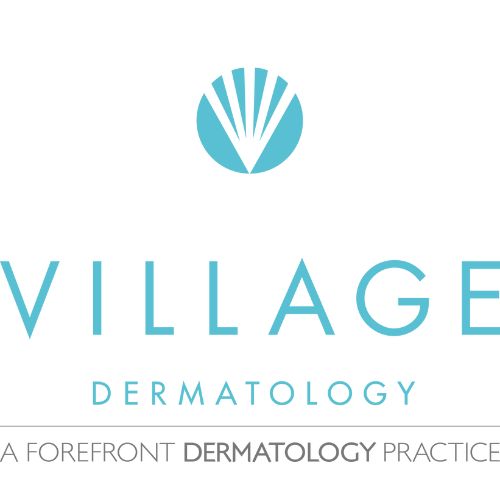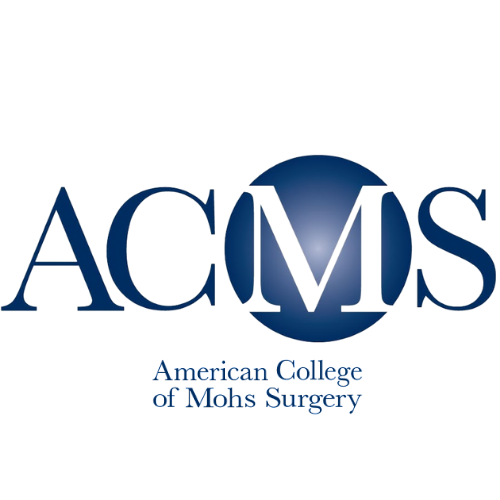Mohs Surgery
Village Dermatology offers you state-of-the-art Mohs micrographic surgery solutions in our office. We use specialized surgical equipment, processes, and procedures to remove your skin cancer and help you get your skin back to health by restoring beauty and function.
Mohs surgery is a state-of-the-art surgical procedure used by specially trained surgeons in the removal of skin cancer. Unlike conventional skin cancer surgery which removes cancerous cells with wide margins, Mohs surgery is more precise. This procedure removes only the cancerous cells while sparing the surrounding tissue.
During the procedure, your surgeon will carefully remove the cancerous tissue and examine 100% of the margins under a microscope. Any remaining cancer cells are precisely mapped and then surgically removed with another layer of tissue in the exact location of the persisting cancer. This process continues until the surgeon has removed all layers of cancerous cells. Removing the skin cancer in this manner obtains the smallest defect possible, and therefore the smallest scar possible.
After the skin cancer is successfully removed, your defect will then be repaired on the same day. Your surgeon is highly trained in plastic surgery and reconstruction techniques specific to the skin to give you the smallest and most cosmetically pleasing outcome possible.
The surgical procedure is performed under local anesthesia and/or conscious sedation on an outpatient basis. You are allowed to leave the clinic the same day of the procedure.
Why Choose Mohs Surgery?
- Mohs surgery yields the highest possible cure rate for skin cancer removal (up to 99%) and decreases the chance of recurrence
- Mohs surgery uses specialized techniques to preserve normal skin tissue during the process resulting in the smallest defect in the skin.
- Mohs surgery is performed under local anesthesia, a much safer alternative to general anesthesia and allows for a faster recovery
- Mohs surgical defects are repaired the same day with advanced cosmetic and plastic surgery techniques to minimize scarring and give the best cosmetic outcome possible
Who is a Candidate for Mohs Surgery?
You’re an ideal candidate for Mohs Surgery if:
- Your tumor is cosmetically sensitive or affects critical parts of the body, like eyes, nose, lips, scalp, fingers, etc.
- Your tumor is large, aggressive, and growing at a fast rate
- Your tumor is recurrent
- Your tumor has edges, and the shape is not defined.
Risk Factors/Complications of Mohs Surgery
Just like every other type of surgery, there are risks and common complications associated with Mohs surgery.
Some of these risks include:
- Infection
- Bleeding
- Pain or skin tenderness
- Itching or pain in or around the surgery site
- Scarring
Preoperative Care
As part of scheduling your surgery, it’s essential you consult with our surgery scheduling team to know more about the procedure, results, risks, and expected outcome. We will review your medical records and give you prescriptions and instructions to follow for a successful surgery.
- Our surgical scheduling team will advise you whether or not to eat anything on the day of your surgery.
- Do not wear makeup or lotion on the day of the operation
- You should take your routine medications unless our schedulers advise otherwise
- Do not stop your blood thinners unless specifically instructed by your managing physician
- Be at the clinic 15-30 minutes ahead of your surgical appointment time
Post-Operative Care
After the surgery, you will have a bandage on the surgery site. Your surgeon will instruct you on the best ways to take care of the wound. Your doctor will prescribe some pain relief medications and schedule a follow-up appointment. You’ll be given instructions on what to do and what to avoid for the best result to be obtained.
Some of the standard instructions include:
- No exercise and physical activities for 1-2 weeks following surgery
- Avoid bending, lifting, or stooping during the recovery period
- Avoid activities that increase your heart rate or blood pressure
- Avoid driving while you’re on pain medication
- Take your prescribed medication and take care of your wound and bandage
Experienced and Reliable Mohs Surgery
Dr. Rachel Pflederer is a board-certified dermatologist who has also completed an extensive Mohs Micrographic Surgery Fellowship. This level of specialized training and reconstructive knowledge is unparalleled and provides the best possible results for our patients. Our office adheres to health, safety, and environmental regulations to ensure you get a safe and reliable surgical treatment for your skin cancer. We want to be sure you understand your need for surgery and have clear expectations for results and outcomes.



